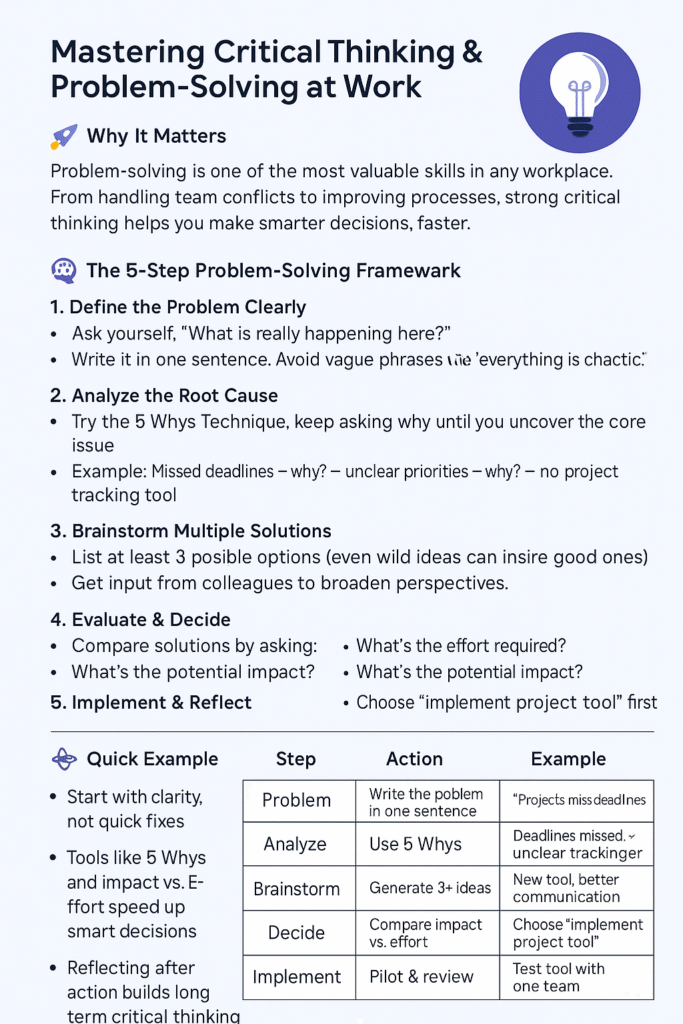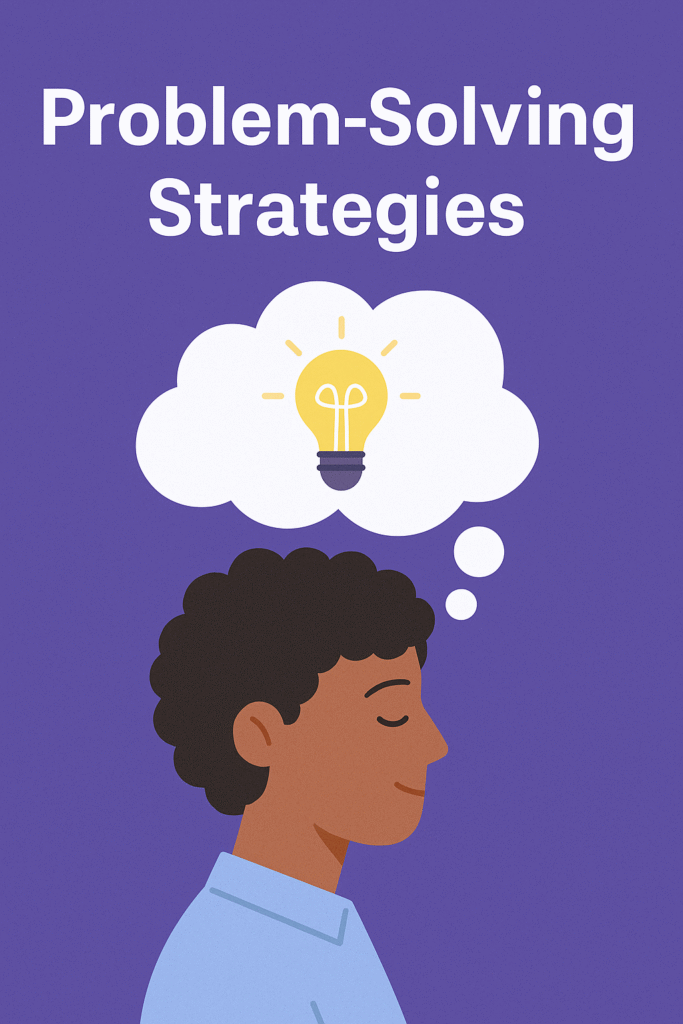At work, critical thinking and problem-solving are essential skills every professional needs. Whether you’re resolving team challenges or finding better ways to improve workflows, these abilities help you make clearer, faster, and more effective decisions.
Why It Matters
Modern workplaces are fast-paced and complex. Problems don’t always have obvious solutions, and rushing can lead to costly mistakes. By pausing to think critically, you gain the ability to:
- Compare options before committing to action
- Analyze situations from multiple perspectives.
- Identify root causes instead of just symptoms.
The 5-Step Problem-Solving Framework
1. Define the Problem Clearly
- Ask yourself: “What is really happening here?”
- Write it in one sentence. Avoid vague phrases like “everything is chaotic.”
2. Analyze the Root Cause
- Try the 5 Whys Technique: keep asking why until you uncover the core issue.
- Example: “Missed deadlines → why? → unclear priorities → why? → no project tracking tool.”
3. Brainstorm Multiple Solutions
- List at least 3 possible options (even wild ideas can inspire good ones).
- Get input from colleagues to broaden perspectives.
4. Evaluate & Decide
- Compare solutions by asking:
- What’s the effort required?
- What’s the potential impact?
- Choose the option with high impact, low effort to test first.
5. Implement & Reflect
- Afterwards, ask: Did this solve the real issue? What did we learn?
- Act quickly on a small version (a pilot).
Quick Example
Problem: Meetings always run over time
- Root cause: No agenda and no facilitator.
- Solutions: (1) Pre-send agenda, (2) Assign timekeeper,
- Decision: Start with agenda + timekeeper.
- Result: Meetings finish on time within 2 weeks.
Key Takeaways
- Start with clarity, not quick fixes.
- Tools like 5 Whys and Impact vs. Effort speed up smart decisions.
- Reflecting after action builds long-term critical thinking habits.

For a detailed workplace-focused framework see https://www.business.com/articles/building-critical-thinking-skills-at-work/ for a six step process that reinforces these strategies.

